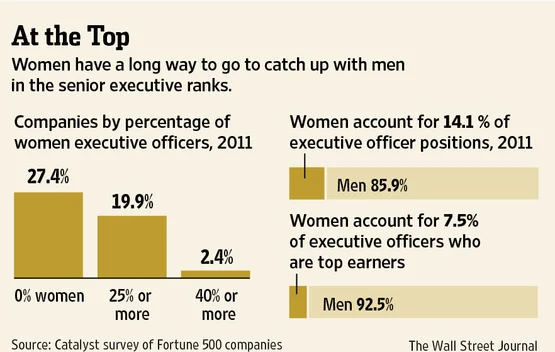New research from the Harvard Business Review finds most women running Fortune 500 companies did not immediately hop on a “competitive business track.”
“Only three had a job at a consulting firm or bank right out of college. A larger share of the female CEOs—over 20%—took jobs right out of school at the companies they now run. These weren’t glamorous jobs. Mary Barra, now the CEO of General Motors, started out with the company as college co-op student. Kathleen Mazzearella started out as a customer service representative at Greybar, the company she would eventually become the CEO of more than 30 years later. All told, over 70 percent of the 24 CEOs spent more than ten years at the company they now run, becoming long-term insiders before becoming CEO. This includes Heather Bresch at Mylan, Gracia Martore at Gannett, and Debra Reed at Sempra Energy.”
“Even those who weren’t promoted as long-term insiders often worked their way up a particular corporate ladder, advancing over decades at a single company and later making a lateral move into the CEO role at another company. This was the experience of Patricia Woertz, CEO of Archer Daniels Midland (ADM), who built her career over 29 years at Chevron. And it was the experience of Sheri McCoy, who became CEO of Avon after being passed over for the CEO role at Johnson & Johnson, where she worked for 30 years.”
Key takeaway: “The consistent theme in the data is that steady focus wins the day. The median long stint for these women CEOs is 23 years spent at a single company in one stretch before becoming the CEO. To understand whether this was the norm, we pulled a random sample of their male Fortune 500 CEO counterparts. For the men in the sample, the median long stint is 15 years. This means that for women, the long climb is over 50% longer than for their male peers.”
The Wall Street Journal notes that the ranks of female chief executives “remain thin, with women in the top spot at just 35 Fortune 1000 companies.”

